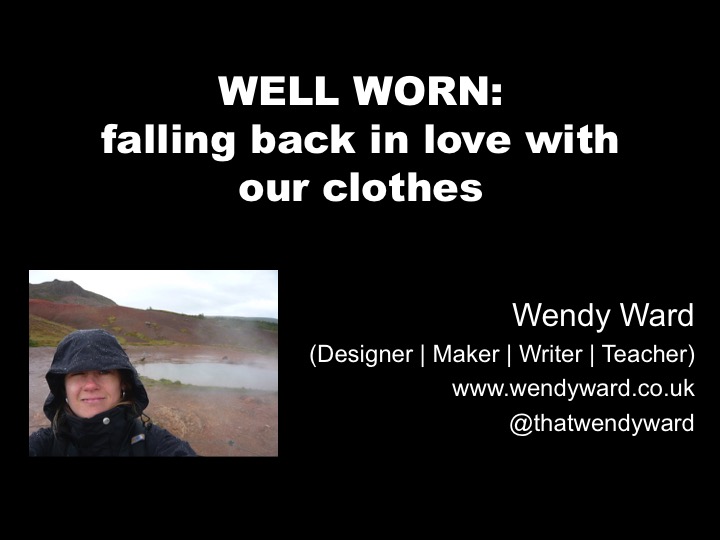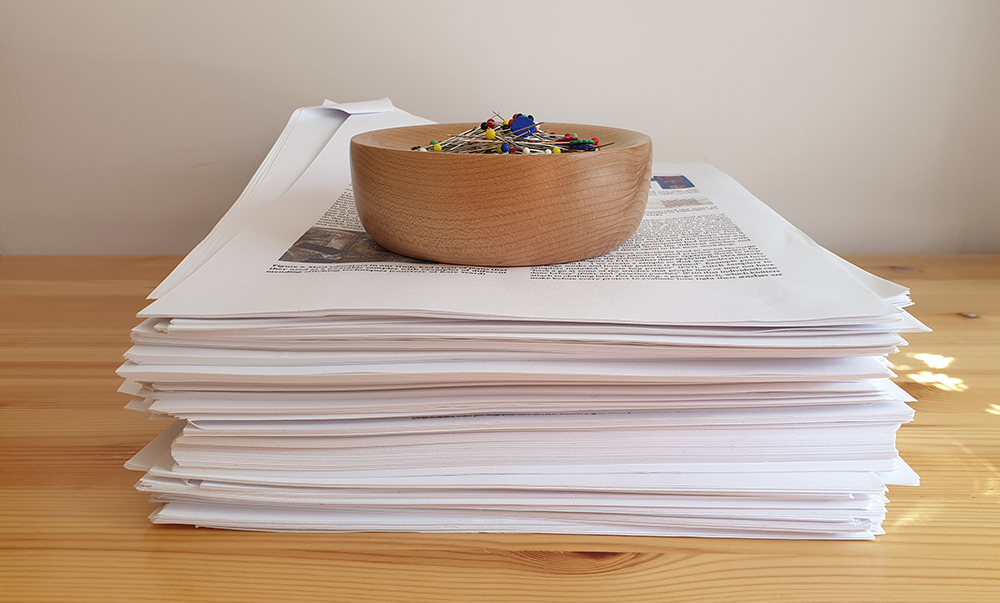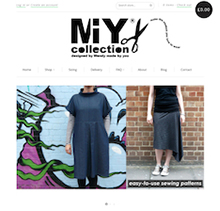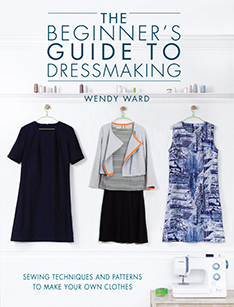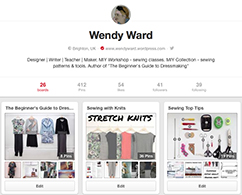
What are ethical fabrics?
Most of us are aware of (and probably also buy) fair trade food and several factory fires and collapses in overseas garment factories over recent years have widened awareness of ethical fashion. There are lots of brands now championing the movement; probably the most well-known being People Tree.
But what about the fabric you use in your dressmaking? One of the reasons I love to make my own clothes is that it puts me in direct control of a major part of the garment making cycle – I made my clothes, so I know that no workers were exploited or environments damaged in making them, right? Well it’s a start, but what about the fabric?
Issues of sustainability and ethical production have been an interest of mine for a long time, in fact it was the subject of my dissertation for my degree 16 years ago! Here are a few facts and figures to get us started:
- Around the world, £40 billion is spent annually on textiles.
- In 2009 the UK fashion industry alone spent £229 million on textiles.
- 2007 to 2011 saw a 75% increase in the market for ethical fashion.
A not insignificant part of our economy!
To find out more about how those of us that make our own clothes can use ethical fabrics I approached Charlie Ross an ex fashion designer trained at the Royal College of Art and went on to set up Offset Warehouse to see if she would agree to an interview. I was over the moon when she agreed to share some of her knowledge with us, so here it is.
Wendy: What makes a fabric ethical?
Charlie: Ethical fabrics are those that are environmentally or socially beneficial, and preferably both. This includes fabrics that are organic, Fairtrade, made from responsibly-sourced raw materials, are recycled, and are manufactured by workers who are paid a fair wage or have a stake in the business.
Wendy: I guess if I’m going to use ethical fabric in my next project I should also consider how all the other parts are made such as threads, zips, binding, elastic, etc, is it also possible to buy ethically produced versions?
Charlie: Absolutely! We stock all sorts of ethical haberdashery: organic threads and zips, upcycled buttons, organic interfacing, bias binding and ribbons. Sourcing these smaller items can be difficult though as the range available is still quite small.
Wendy: What are the main ways that fabric production can be socially or environmentally damaging?
Charlie: Phew, this is just such a massive and complicated subject, but the two main areas we are concerned with are:
The Raw Materials and the Production Process
In many cases, the damage is done before the fabric even becomes a fabric! A prime example is cotton – a fabric we are all led to believe is natural and therefore good – which it certainly is if it’s organically produced. But commercially-grown cotton is not. Its production covers 55% of the world’s cultivated land, yet it’s responsible for the release of US$ 2 billion of chemical pesticides each year! Just under half of these chemicals are considered toxic enough to be classified as hazardous by the World Health Organisation. That’s just shocking, and not enough people are aware of it.
The Aral Sea in Central Asia is another example. In the early 1960s, the Soviet government decided to divert the two rivers which fed the Aral Sea in order to irrigate the desert so they could grow cotton and other crops. The result of this was the entire sea was completely drained, and the lands left behind were turned into carcinogenic wastelands – all because of unsustainable farming.
That’s why I love sourcing and designing fabrics made with more unusual fibres, such as hemp, soy, bamboo and banana. I know what you’re thinking – common perceptions are that these more ethical fibres can be scratchy to the touch, but I source some of the softest, most beautiful, fashionable fabrics in amazing eco fibres! Hemp, for example, has a terrible reputation for being hippy and grungy, but we sell the most stunning hemp silk blends in amazing colours.
The People
Driven by today’s culture of fast consumerism, and in order to compete with increasingly low prices, the textile industry has had to cut corners. Most conventional fabrics are produced by untrained, underpaid (and sometimes not paid at all), overworked staff, in unsafe surroundings. These textiles require highly toxic chemicals to produce them, and these are often handled by workers without the proper safety equipment.
This was one of the main driving forces behind my quest for ethical fabrics – and how I eventually came to start Offset Warehouse. I couldn’t bear the thought that my sewing creations might be harming someone, and I never considered they may have been a product of slave labour. All of our manufacturers and weavers are paid fairly for their fabrics. We also work with very small communities, who weave outside their houses and choose their own hours. They set their prices and their manufacturing timelines, and we never, ever, pressure them to decrease either.

Wendy: Is ethical fabric better quality?
Charlie: Like all textiles, ethical fabrics come in a range of qualities. An organic fibre will behave no differently to a non-organic one – except there are no nasty chemicals in there – so they can be woven in exactly the same way. Therefore, there is absolutely no reason that an ethical fabric should be of a lower or higher quality.


It’s sometimes easy to mistake quality for the finish of the fabric. We sell ethical fabrics that are machine woven, which have a much more consistent surface, and those that are woven by hand, which are more “slubby” and irregular. It’s easy to look at the slubby and irregular fabric, and think it’s a “lower” quality, but we couldn’t be more wrong. I actually prefer hand woven fabrics because of the incredible work that goes into them, their authenticity and character. Both processes produce beautiful products, and each suitable for different things.
Wendy: Do I have to treat ethical fabric any differently to my regular fabric?
Charlie: Absolutely not! In fact, when opting for more sustainable fibres like hemp, linen and soy, you’ll find that your fabric will be a lot easier to care for.
Where can I buy ethical fabrics?

They’re still not that widely available, but there if you look for them. Some online fabric retailers have started to add organic collections or special limited collections sourced direct from artisan groups in places like India, there are also a few specialist online retailers if you search “where to buy ethical fabrics” you should set off on the right track!
Where can I find out more?
http://www.labourbehindthelabel.org
http://www.ethicalfashionforum.com
Some of Charlie’s Top Tips:
- If you can’t find ethically produced haberdashery – recycle and re-use! Before you get rid of old clothes take off the buttons, zips, clips, hooks and save them for future projects.
- Did you know that the most impact from a textile comes right from our very own homes? With the amount of energy and chemicals we use just by using our washing machines, we are pumping huge amounts of pollution into our air and water on a daily basis. Washing on a quick, low-heat wash – or better yet, hand washing – can make a huge difference.
A huge thanks to Charlie for this interview and providing me with facts and figures. I interviewed Charlie for issue 21 of Love Sewing magazine (out now) and this is the full un-edited version of the interview which was a wee bit too long to fit in my pages of the magazine!
What is Offset Warehouse?

Offset Warehouse is a social enterprise which brings together a huge range of hand-picked eco fabrics and haberdashery. All of Offset Warehouse’s products benefit either the people who make them, or the environment, and usually both. This includes products that are organic, Fairtrade and made in cooperatives.
Charlie Ross founded the company five years ago. Graduating from the Royal College of Art with a Masters in Menswear Design, she continued on to work with some of the biggest names in the fashion industry.
Charlie and her team source the most beautiful, hand-crafted and fairly-sourced fabrics, trims, threads, dyes and glues from across the globe, and sell from one to hundreds of metres at affordable but fair prices. And because of her fashion background, the website is always up to date with current and future trends, proving that you can be eco and fashionable. Most importantly, you can feel good knowing exactly where your fabric has come from, and who has made it. And that’s a good thing, for everyone.
© Wendy Ward. Share this:
